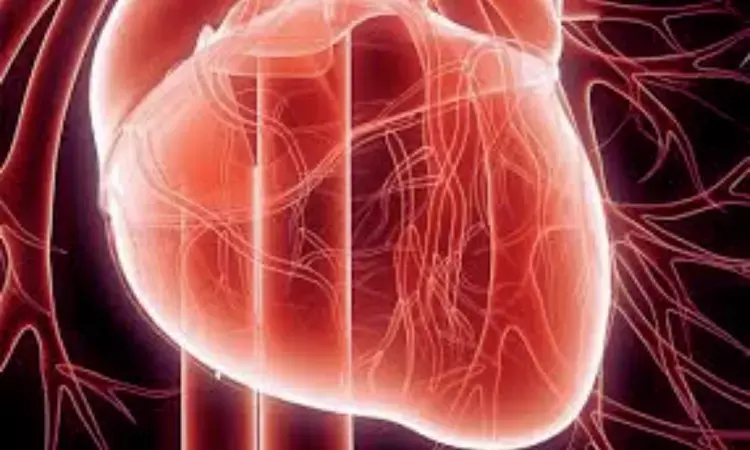- Home
- Medical news & Guidelines
- Anesthesiology
- Cardiology and CTVS
- Critical Care
- Dentistry
- Dermatology
- Diabetes and Endocrinology
- ENT
- Gastroenterology
- Medicine
- Nephrology
- Neurology
- Obstretics-Gynaecology
- Oncology
- Ophthalmology
- Orthopaedics
- Pediatrics-Neonatology
- Psychiatry
- Pulmonology
- Radiology
- Surgery
- Urology
- Laboratory Medicine
- Diet
- Nursing
- Paramedical
- Physiotherapy
- Health news
- Fact Check
- Bone Health Fact Check
- Brain Health Fact Check
- Cancer Related Fact Check
- Child Care Fact Check
- Dental and oral health fact check
- Diabetes and metabolic health fact check
- Diet and Nutrition Fact Check
- Eye and ENT Care Fact Check
- Fitness fact check
- Gut health fact check
- Heart health fact check
- Kidney health fact check
- Medical education fact check
- Men's health fact check
- Respiratory fact check
- Skin and hair care fact check
- Vaccine and Immunization fact check
- Women's health fact check
- AYUSH
- State News
- Andaman and Nicobar Islands
- Andhra Pradesh
- Arunachal Pradesh
- Assam
- Bihar
- Chandigarh
- Chattisgarh
- Dadra and Nagar Haveli
- Daman and Diu
- Delhi
- Goa
- Gujarat
- Haryana
- Himachal Pradesh
- Jammu & Kashmir
- Jharkhand
- Karnataka
- Kerala
- Ladakh
- Lakshadweep
- Madhya Pradesh
- Maharashtra
- Manipur
- Meghalaya
- Mizoram
- Nagaland
- Odisha
- Puducherry
- Punjab
- Rajasthan
- Sikkim
- Tamil Nadu
- Telangana
- Tripura
- Uttar Pradesh
- Uttrakhand
- West Bengal
- Medical Education
- Industry
High perivascular fat attenuation index at proximal segment right coronary artery may predict MACE: Study

Researchers have found in a new study that high perivascular fat attenuation index (FAI) at the proximal segment of the right coronary artery (RCA) is strongly associated with an increased risk of long-term major adverse cardiovascular events (MACE). It may serve as a valuable tool for cardiovascular risk stratification in young individuals suspected of coronary artery disease (CAD). This study was conducted by Yani Yu and fellow researchers published in the journal BMC Cardiovascular Disorders.
The perivascular FAI, assessed using coronary computed tomographic angiography (CCTA), has been established as a prognostic marker for cardiovascular risk. However, limited research has focused on its predictive value in younger populations. This study aimed to evaluate the association between FAI and long-term MACE risk in individuals aged 45 years or younger who underwent CCTA due to suspected CAD.
Perivascular FAI at the proximal RCA in 503 adult patients aged ≤45 years at baseline who received CCTA in 2015-2016 and were at least five-year follow-up performed was measured; they were split into high or low FAI groups based on an optimal cutoff value of −75.2 HU. Cox hazard regression and Kaplan-Meier (K-M) survival analysis were performed to assess the prognostic value of FAI and its improvement over traditional risk factor prediction models.
Results
• Patients with high FAI (≥-75.2 HU) had a significantly lower event-free survival rate at a median follow-up of 72.7 months than those with low FAI (<-75.2 HU) (93.9% vs. 99.7%, p< 0.001).
• High FAI was significantly related to an increased risk of MACE (HR = 19.257, 95% CI: 2.504-148.107, p= 0.004).
• Adding FAI to traditional risk factor models resulted in improved predictability, which increased the area under the curve from 0.728 to 0.845 (p< 0.001).
• It also indicated improvements in the integrated discrimination index (p=0.033). Additionally, it improved the net reclassification index, NRI = 0.597, 95% CI: 0.000-0.699 (p=0.024).
The study authors concluded that high perivascular FAI at the proximal RCA is a robust predictor of long-term MACE in young adults. This study's outcomes need further verification and exploration on the possibility of incorporating FAI assessment into routine clinical practice.
Reference:
Yu, Y., Shan, D., Wang, X. et al. Predictive value of the perivascular fat attenuation index for MACE in young people suspected of CAD. BMC Cardiovasc Disord 25, 80 (2025). https://doi.org/10.1186/s12872-024-04401-0
Dr Riya Dave has completed dentistry from Gujarat University in 2022. She is a dentist and accomplished medical and scientific writer known for her commitment to bridging the gap between clinical expertise and accessible healthcare information. She has been actively involved in writing blogs related to health and wellness.
Dr Kamal Kant Kohli-MBBS, DTCD- a chest specialist with more than 30 years of practice and a flair for writing clinical articles, Dr Kamal Kant Kohli joined Medical Dialogues as a Chief Editor of Medical News. Besides writing articles, as an editor, he proofreads and verifies all the medical content published on Medical Dialogues including those coming from journals, studies,medical conferences,guidelines etc. Email: drkohli@medicaldialogues.in. Contact no. 011-43720751


